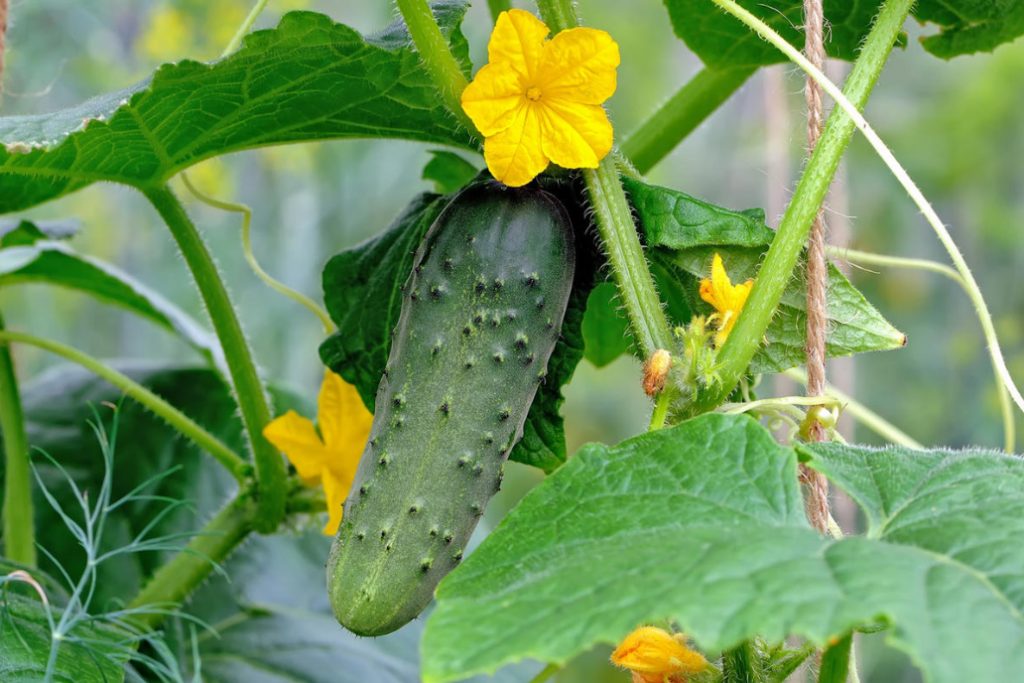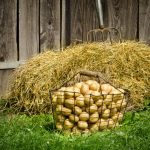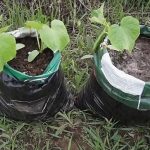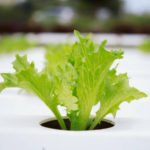Growing cucumbers is an exciting process. It is so nice that in a very short time the seed turns out to be a large fruiting plant that gives a competent gardener delicious fruits!
Recently, cucumbers grow in the open ground on the site. For several years, different ways of growing them were tried — I made high beds of compost, built a special small greenhouse, tied the lashes to vertically stretched ropes, etc. But gradually, more and more simplifying the process, I moved to the most elementary method — growing on an ordinary bed, right on the ground next to the corn. The yield is quite acceptable.
How to make a garden bed
The place for cucumbers should be chosen in the fall. It is necessary to observe the crop rotation-so that the precursors for this crop were tomatoes, onions or cabbage and for 3-4 years cucumbers, watermelons or melons did not grow in this place. On an ordinary bed 1 m wide, 5 m long, we add humus from chicken droppings (1 bucket), humus from compost (1-2 buckets) and sand (5 buckets). Sand is added when the soil is very heavy, cucumbers do not like this. Autumn digging of beds is not done, we leave everything until spring.
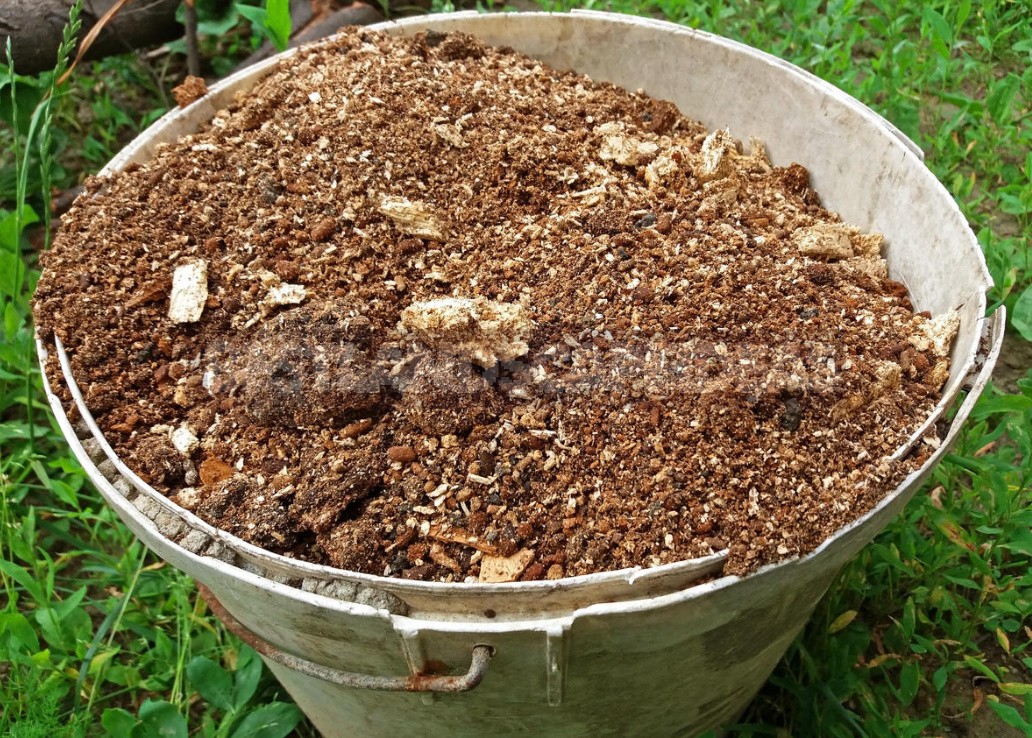
The bed is dug up in the first days of may. Next to each side, as a rule, we have rows of radishes, lettuce or a row or two of early potatoes. When in June — early July, the harvest of these crops will be collected, the vacant space will just be needed for growing lashes of cucumber plants.
Sowing and protection from the cold
On may 15-20, we sow dry cucumber seeds in the prepared soil: in 1 row in the center to a depth of 2-3 cm at a distance of 10-20 cm from each other. The bed is mulched with peat, watered with warm, sun-warmed water and set metal arcs on which we fix a strip of covering material. And this is done directly by planting radishes.
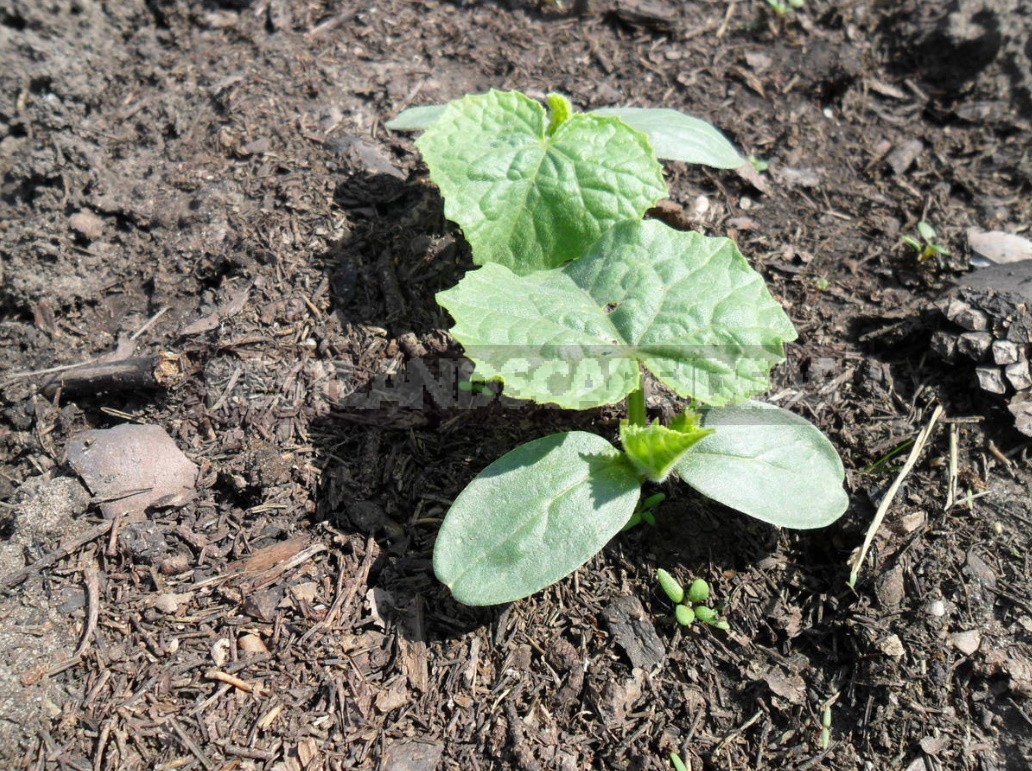
At a distance of 1.5-2 m from the row of cucumbers on each side, we plant corn. It will not only give a good harvest of delicious cobs in autumn, but will also protect cucumbers from cold winds and excessively hot sun all summer, creating an excellent microclimate for them. In addition, cucumbers use corn stalks as a support.
Thin cucumbers 1 time, when the plants will appear 2-3 real leaves. Leave gaps between the bushes in 50-60 cm. You do not need to frequent them, because cucumbers grow very much in the summer. Until the second decade of June, until the threat of frost finally passes, the beds with cucumbers should be covered at night — and during the day, remove the shelter.
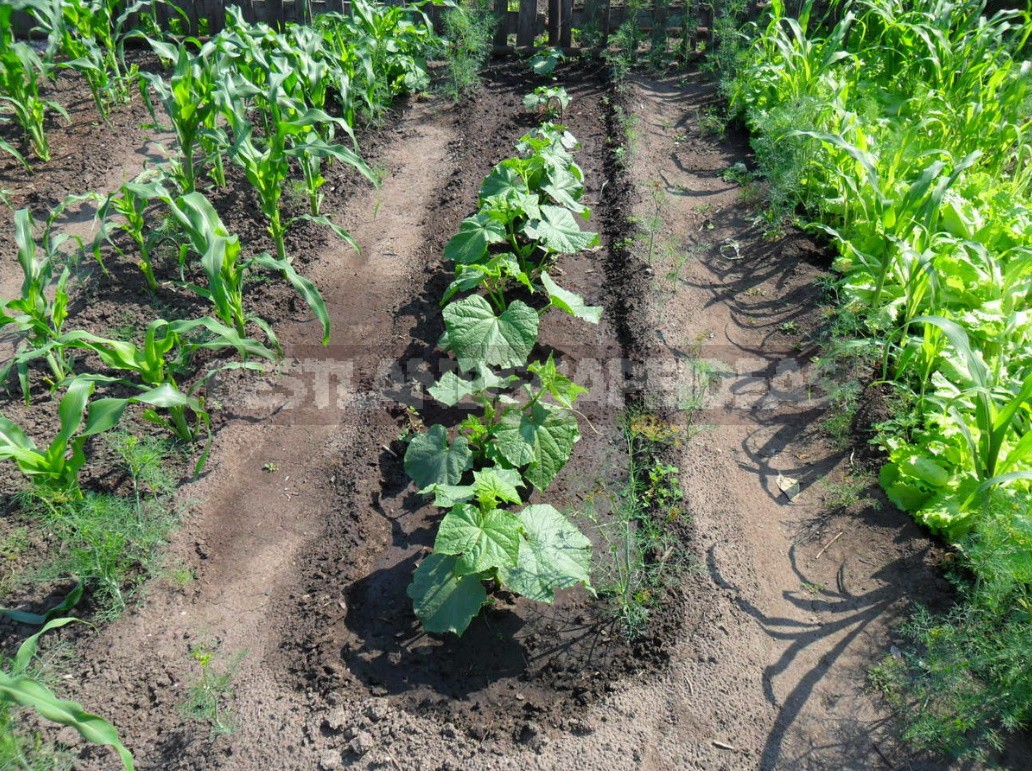
Feeding and watering
Twice a season we give liquid top dressing. The first time — in late may, early June, when the seedlings will appear 2-3 real leaves; and the second time-in early July. A few hours before fertilizing the soil should be shed. You can apply liquid fertilizers after a good rain.
For liquid feedings, chicken droppings are excellent. In a bucket of 10-12 liters, carefully mix a portion of fresh chicken droppings with water at the rate of 1: 10 or 1: 15 and use immediately (it is better not to insist, to avoid nitrogen losses). Cucumbers with this solution should be watered very evenly, slowly, from a watering can without a sprinkler. Fertilizer consumption when watering between plants — 1 bucket per bed (length-5 m, 1 row of cucumbers).
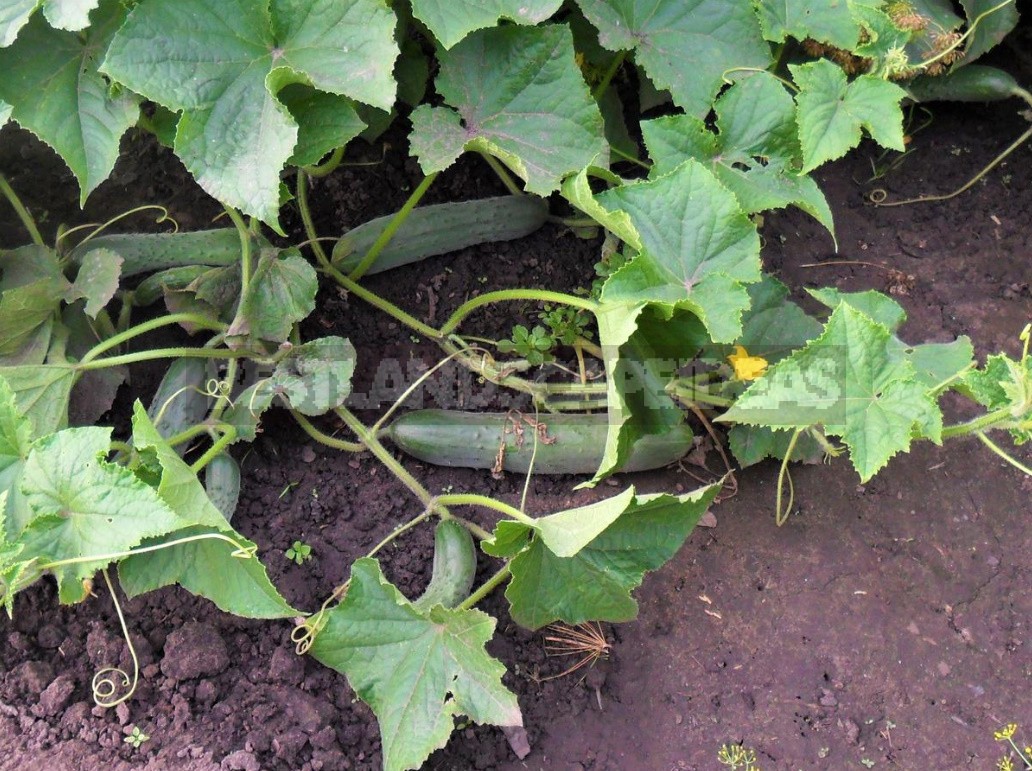
All season cucumbers need to be regularly and abundantly watered with warm water; but weeding and loosening is required only for the first time, until the lashes grow, then weeds just do not pay attention to. Water not only the cucumber bed itself, but also the entire space occupied by the lashes, because they, lying on the ground, give additional roots that contribute to the nutrition of the plant.
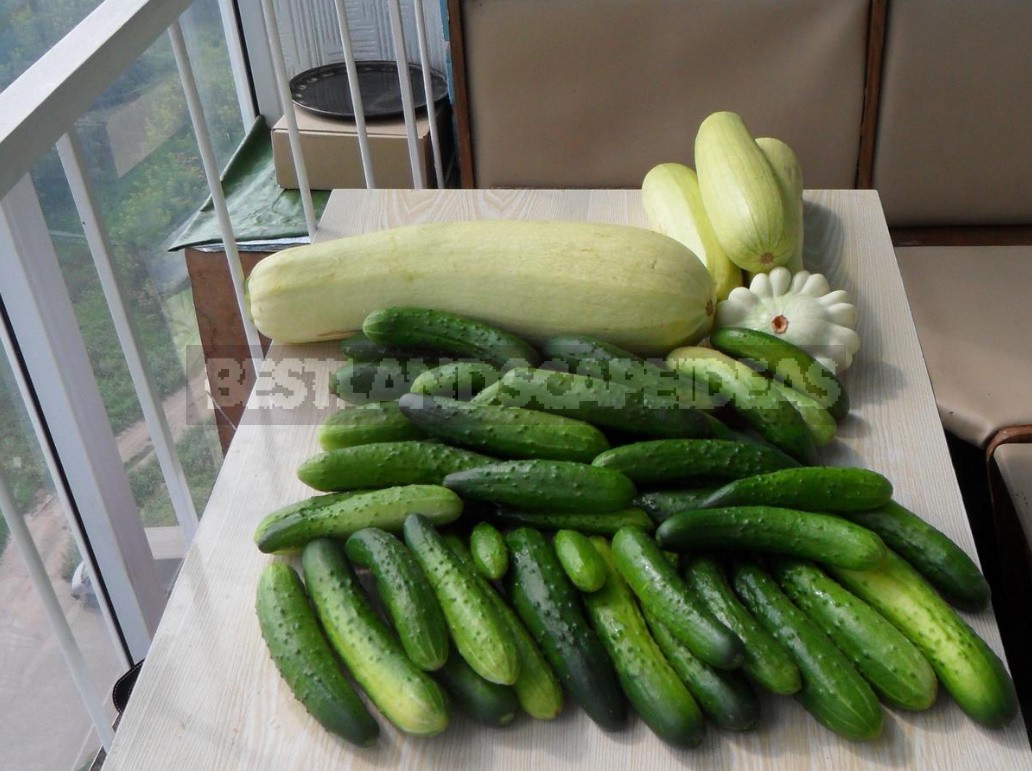
Over the past few years, no diseases or pests have been observed on cucumbers. The yield with such a simple method of growing, for example, last year was about 8 buckets of beautiful, healthy and delicious greens from a single bed of 5 m². This is with about 1 bucket (7-8 kg) with 1 plant. And more simply and do not need! Enough to eat plenty, and salt, and freeze as much as necessary.
Even in difficult conditions, it is quite possible to effectively garden and grow heat-loving plants, such as cucumbers, in a seedless way.
